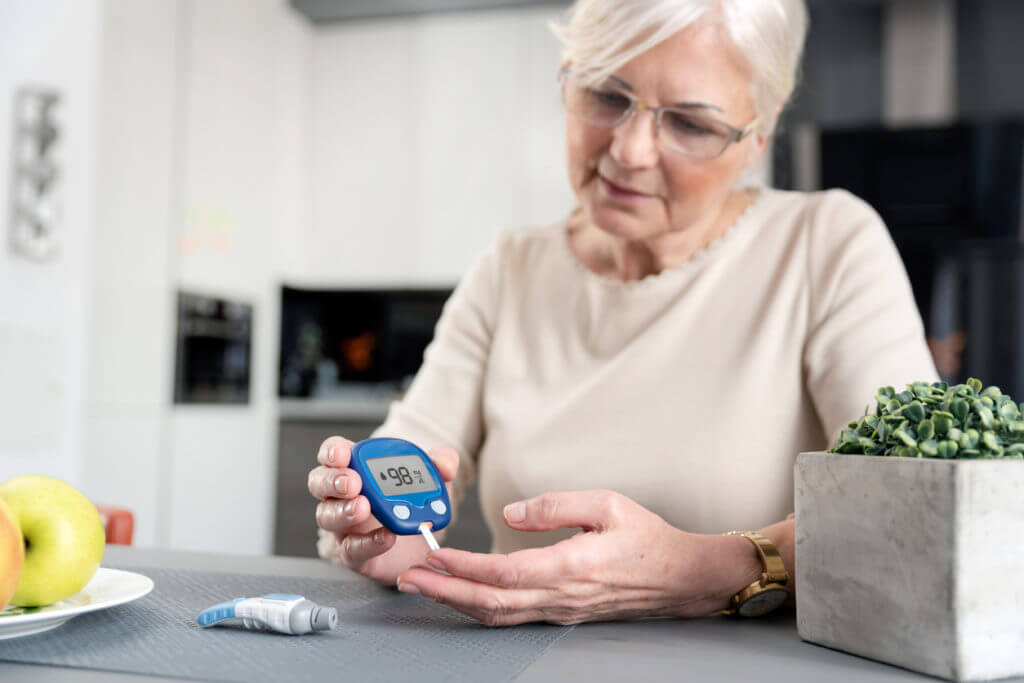
Diabetes is a chronic health problem that is among the top ten causes of death in the United States. There are two common types of diabetes: type 1 and type 2. There are distinct differences between the two that make management of the conditions slightly different.
Symptoms
Type 1 and type 2 diabetes have pretty much the same symptoms. However, symptoms of type 1 diabetes often appear earlier than that of type 2 diabetes. There are even cases of patients with type 2 diabetes being unaware they have the condition because of a lack of noticeable symptoms.
Symptoms of both types of diabetes include:
- Frequent urination
- Extreme thirst
- Sudden weight loss
- Bedwetting
- Slow-healing sores
- Blurry eyesight
- Tingling feeling in the feet
Causes
The exact cause of both types of diabetes is unknown, but genetics are a major factor in the development of both. Other risk factors for developing type 1 and type 2 diabetes differ slightly.
Type 1 Diabetes
Type 1 diabetes is also known as juvenile diabetes because it often develops during childhood. This type of diabetes develops when the body’s immune system attacks the healthy insulin-producing cells in the pancreas. This results in little to no insulin production. Aside from a family history of type 1 diabetes, risk factors include:
- This condition may present at any age, however, research shows that it has two peaks: (1) between the ages of 4 – 7 and (2) between the ages of 10 – 14.
- Environmental factors. Some findings indicate that less time spent breastfeeding and an early introduction of milk formula may also increase the risk of developing type 1 diabetes.
Type 2 Diabetes
Type 2 diabetes, also known as adult-onset diabetes, can develop at any age, however, it is more common among adults. It develops when the body resists the effects of insulin or doesn’t generate enough to maintain healthy blood sugar levels. Risk factors include:
- Weight and fat distribution. Being overweight and having a bigger waist size, more than 40 inches for men and more than 35 for women, increase the risk for type 2 diabetes.
- African Americans, Hispanics, American Indians, and Asian Americans are more at risk for type 2 diabetes.
- Older people are more at risk. As we age, we are less likely to be physically active, which can increase risk, as well.
- Polycystic ovarian syndrome. Women with this condition have an increased risk of type 2 diabetes.
Management
Type 1 and type 2 diabetes don’t have a cure but can be managed. Primary treatments will differ between the two because the causes of the two conditions are different. For both type 1 and type 2, your doctor will require you to monitor your blood sugar level frequently during the day to ensure you stay within healthy levels at all times.
Type 1 Diabetes
The primary treatment for type 1 diabetes is lifelong insulin therapy. Because the body does not produce insulin anymore, artificial insulin is critical to managing blood sugar levels. Other treatments include:
- Lifestyle changes. This includes monitoring carbohydrate intake to reduce how much insulin you need and exercising, which helps lower blood sugar levels.
- Artificial pancreas. This relatively new treatment option is known as closed-loop insulin delivery. An implanted device will deliver the necessary amount of insulin based on the glucose monitor attached to it.
- Other medications. Some examples are aspirin, high blood pressure drugs, and cholesterol-lowering medication. This help protect your heart and kidneys.
Type 2 Diabetes
The primary treatment for type 2 diabetes is weight loss because losing weight can help keep your glucose levels normal. It is also found to improve the function of pancreatic cells responsible for insulin production. Other treatments include:
- Lifestyle changes. Eating fewer artificial sweetener calories and more fibrous foods, vegetables, and fruits can help keep blood sugar levels in check. Regular exercise is also necessary to lower blood sugar levels and keep weight off.
- Drugs like metformin and sulfonylureas can help manage glucose levels.
- Insulin therapy. Research has shown that early insulin therapy can help manage type 2 diabetes better.
- Bariatric surgery. Weight-loss surgery is a last-resort option for obese individuals struggling to keep blood sugar levels in check.
A significant difference between type 1 and type 2 diabetes is that type 2 diabetes can be managed very well with proper weight management and diet. Many patients can even stop taking medication to manage blood sugar levels. However, type 1 diabetes requires lifelong treatment to replenish insulin levels.
Diabetes Treatment in Tucson, Arizona
Dr. Robert Lending is a board-certified internal medicine and lipidology specialist with years of experience serving the healthcare needs of adults, including diabetes. We offer concierge healthcare services, promising you prompt and personalized care. No more waiting rooms!
You can reach us at (520) 795-4291. You may also secure an appointment with us through our online request form. Let us give you the VIP healthcare you deserve!



